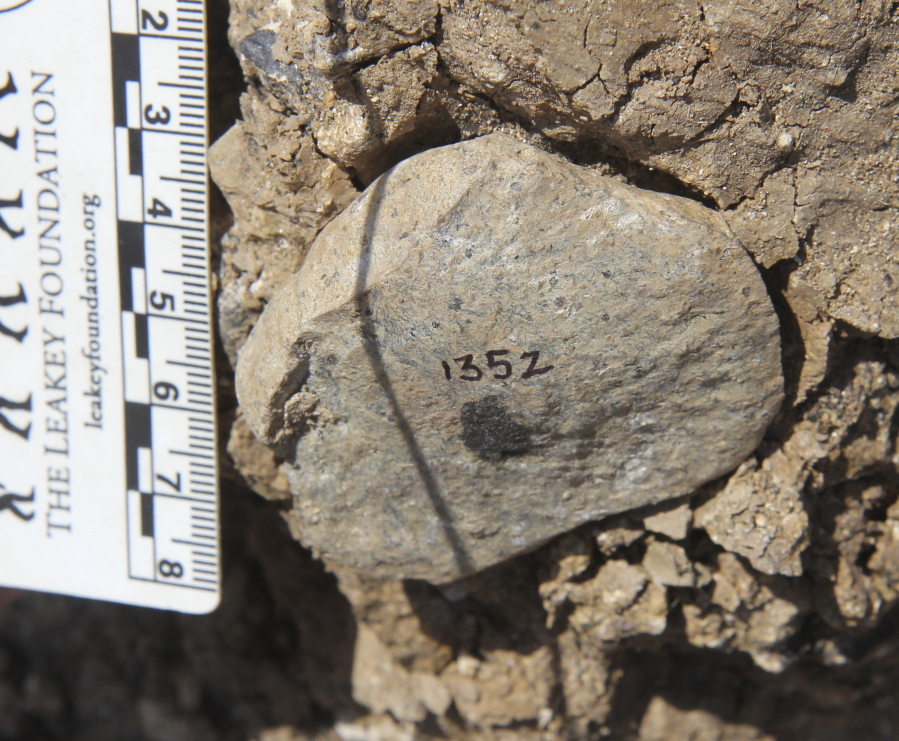NEW YORK — Archaeologists in Kenya have dug up some of the oldest stone tools ever found, but who used them is a mystery.
In the past, scientists assumed that our direct ancestors were the only toolmakers. But two big fossil teeth found along with the tools at the Kenyan site belong to an extinct human cousin known as Paranthropus, according to a study published Thursday in the journal Science.
This adds to the evidence that our direct relatives in the Homo lineage may not have been the only tech-savvy creatures during the Stone Age, said study author Rick Potts, director of the Smithsonian’s Human Origins Program.
“Those teeth open up an amazing whodunit — a real question of, well, who were these earliest toolmakers?” Potts said.
The tools date back to around 2.9 million years ago, when early humans used them to butcher hippos for their meat, the researchers report.
Older stone tools have been found in Kenya, dating back to around 3.3 million years ago, long before our own Homo ancestors appeared. Those tools were a bit simpler and so far have only been found in one spot, said Shannon McPherron, an archaeologist at Germany’s Max Planck Institute for Evolutionary Anthropology who was not involved with the study.
The latest discovery matches up with a much bigger tradition known as the Oldowan toolkit. These same kinds of tools show up across Africa and beyond during more than a million years of prehistory, Potts said, showing they really caught on among early humans.
They held a rock in one hand and hit it with another stone, chipping off thin, razor-sharp flakes, explained anthropologist Kathy Schick of the Stone Age Institute in Indiana, who wasn’t involved in the research.
With the rocks and flakes, early humans could slice and crush a wide range of materials, said lead author Thomas Plummer, an anthropologist at Queens College of the City University of New York. And the tools from the Kenya site — likely the most ancient Oldowan tools found to date — suggest this gave them an advantage in a key area: eating.
The site, known as Nyayanga, is a lush, hilly landscape on the shores of Lake Victoria. Since starting excavations there in 2015, researchers have found a trove of artifacts and animal bones, along with the two Paranthropus teeth.
Slice marks on several hippo bones show they were cut up for their meat.



